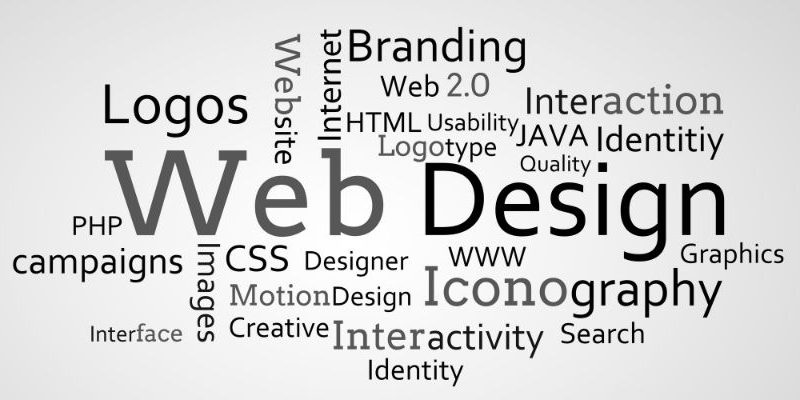Developing a strong online presence requires careful consideration of affordable web design A well-designed website not only attracts visitors but also ensures they stay and convert into customers. Understanding and implementing the principles of effective web design can significantly enhance the user experience and overall functionality of your website. In this post, we will examine the top ten guidelines for effective web design, emphasizing the value of responsive design and highlighting practical, budget-friendly solutions.
1. User-Centered Design

Understanding User Needs
- User Research: Conducting thorough user research helps in understanding the needs, preferences, and behaviors of your target audience. This information is critical for designing a website that meets user expectations.
- User Personas: Creating detailed user personas can help in visualizing the needs and goals of different user groups, guiding the design process to cater to diverse requirements.
Intuitive Navigation
- Simple Menus: Ensure that your website’s navigation menus are simple and easy to understand. Users should be able to find what they are looking for with minimal effort.
- Breadcrumbs: Including breadcrumb navigation can help users keep track of their location within the website, making it easier to navigate back to previous pages.
Clear Call-to-Actions (CTAs)
- Prominent Buttons: CTAs should be prominently placed and visually distinct to encourage user interaction. Use contrasting colors and large buttons to draw attention.
- Action-Oriented Text: Use clear, action-oriented text for CTAs to guide users towards the desired actions, such as “Buy Now,” “Sign Up,” or “Learn More.”
2. Responsive Web Design

Mobile-Friendly Layouts
- Adaptive Design: Responsive web design ensures that your website adapts to different screen sizes and devices, providing a seamless experience for all users. This approach is essential as more users access websites from mobile devices.
- Flexible Grids: Implementing flexible grid layouts helps in maintaining the structure of your website across various screen sizes, ensuring that content is always displayed correctly.
Fast Loading Times
- Optimized Images: Compressing images and using appropriate formats can significantly reduce loading times, enhancing the user experience on both mobile and desktop devices.
- Efficient Coding: Clean and efficient coding practices, such as minimizing CSS and JavaScript files, contribute to faster loading times and improved website performance.
Accessibility
- Inclusive Design: Ensuring that your website is accessible to all users, including those with disabilities, is a key aspect of responsive web design. Use alt text for images, provide keyboard navigation, and ensure that your site is compatible with screen readers.
- Contrast and Readability: Maintain high contrast and readability by choosing appropriate color schemes and font sizes, making it easier for users with visual impairments to navigate your site.
3. Visual Hierarchy
Effective Use of Whitespace
- Clarity and Focus: Whitespace, or negative space, is crucial for creating a clean and focused design. It helps in separating different elements and guiding users’ attention to the most important parts of your website.
- Balanced Layout: Achieving a balanced layout by strategically using whitespace can enhance the overall aesthetic appeal and readability of your site.
Consistent Design Elements
- Uniform Style: Maintaining consistency in design elements such as fonts, colors, and button styles across your website ensures a cohesive look and feel. This consistency builds trust and familiarity among users.
- Brand Identity: Incorporating your brand identity consistently throughout the design reinforces your brand’s presence and makes your website instantly recognizable.
Prioritizing Content
- Content Placement: Arrange content in a way that highlights the most important information first. Use headings, subheadings, and bullet points to make content scannable and easy to digest.
- Visual Cues: Utilize visual cues such as arrows, icons, and images to guide users towards key content and CTAs, enhancing the overall user experience.
4. Engaging Content
High-Quality Images and Videos
- Visual Appeal: High-quality images and videos can significantly enhance the visual appeal of your website, making it more engaging and attractive to users.
- Relevance: Ensure that all visual content is relevant to the text and context, adding value and reinforcing the message you want to convey.
Compelling Copy
- Clear Messaging: Write clear and concise copy that communicates your message effectively. Avoid jargon and ensure that your content is easy to understand for all users.
- SEO-Friendly Content: Optimize your content for search engines by incorporating relevant keywords naturally, helping to improve your website’s visibility and ranking.
Interactive Elements
- User Interaction: Incorporate interactive elements such as sliders, accordions, and interactive infographics to make your website more dynamic and engaging.
- Feedback Mechanisms: Provide feedback mechanisms such as hover effects, loading animations, and progress indicators to enhance the interactivity and user experience.
5. Fast Loading Speed
Optimizing Assets
- Image Compression: Compressing images and using modern formats like WebP can significantly reduce file sizes without compromising quality.
- Minifying Code: Minifying CSS, JavaScript, and HTML files can help reduce loading times, making your website faster and more efficient.
Efficient Hosting
- Quality Hosting Provider: Choose a reliable hosting provider that offers fast servers and minimal downtime to ensure optimal performance.
- Content Delivery Network (CDN): Utilizing a CDN can distribute your website’s content across multiple servers globally, reducing load times for users regardless of their location.
Regular Maintenance
- Performance Monitoring: Regularly monitor your website’s performance using tools like Google PageSpeed Insights to identify areas for improvement.
- Updates and Patches: Keep your website’s software, plugins, and themes up-to-date to ensure security and optimal performance.
6. Search Engine Optimization (SEO)
Keyword Research
- Targeted Keywords: Conduct thorough keyword research to identify the most relevant and high-traffic keywords for your website. Incorporate these keywords naturally into your content.
- Long-Tail Keywords: Utilize long-tail keywords to attract more specific and targeted traffic, increasing the chances of conversion.
On-Page SEO
- Meta Tags: Optimize meta titles, descriptions, and headers to improve your website’s visibility in search engine results.
- Alt Text for Images: Use descriptive alt text for all images to enhance accessibility and improve search engine indexing.
Quality Backlinks
- Link Building: Build high-quality backlinks from reputable websites to improve your website’s authority and ranking.
- Internal Linking: Use internal linking to guide users through your site and improve the overall SEO by distributing link equity across pages.
Final Wording
Implementing the principles of good web design is essential for creating an effective and engaging online presence. By focusing on user-centered design, responsive web design, visual hierarchy, engaging content, fast loading speeds, and SEO, you can ensure that your website meets the needs and expectations of your users. click wise design specializes in creating websites that embody these principles, offering tailored solutions to enhance your site’s performance and user experience. By integrating the top 5 roofing materials and ensuring your website is optimized for roofing repair and replacement services, you can attract more visitors and convert them into loyal customers. Prioritize these principles to build a website that not only looks great but also functions seamlessly, driving success for your online presence.
FAQ’s
Responsive web design ensures that a website adapts to different screen sizes and devices, providing a seamless user experience. This is crucial as more users access websites from mobile devices. Ensuring your site is mobile-friendly improves user satisfaction and can positively impact search engine rankings.
Click Wise Design focuses on understanding user needs through research and creating user personas. By prioritizing intuitive navigation, clear CTAs, and an overall user-friendly interface, they ensure that the websites they design meet the expectations and needs of their target audience.
Visual hierarchy guides users’ attention to the most important elements of a website. By effectively using whitespace, maintaining consistent design elements, and prioritizing content placement, a well-structured visual hierarchy enhances usability and user engagement.
Optimizing assets like compressing images, minifying code, and choosing a quality hosting provider are key steps. Additionally, using a Content Delivery Network (CDN) can distribute content globally, reducing load times for users regardless of their location.
Engaging content, including high-quality images, videos, and compelling copy, attracts and retains users. Interactive elements and SEO-friendly content further enhance user interaction and improve search engine rankings, making your website more effective in achieving its goals.







